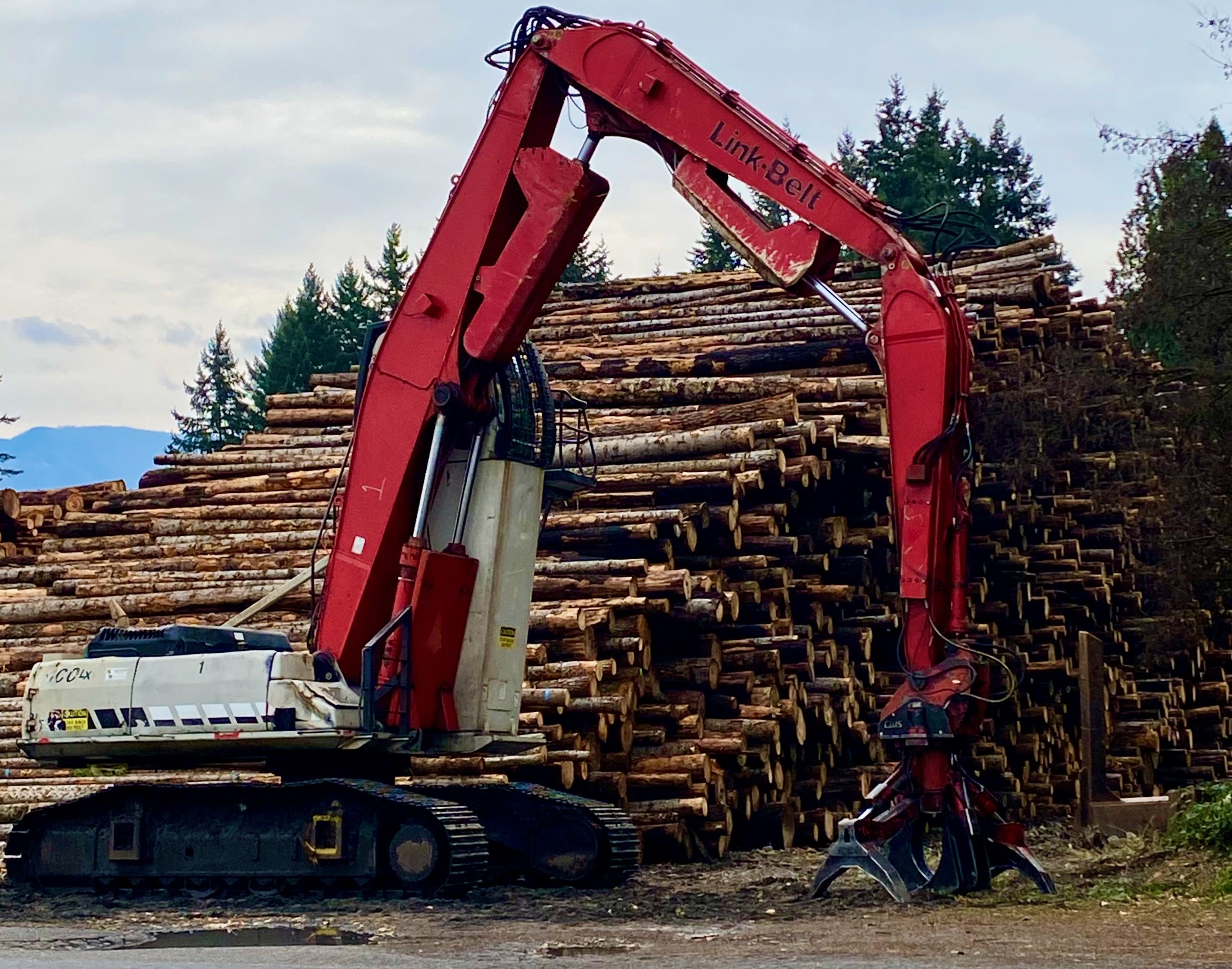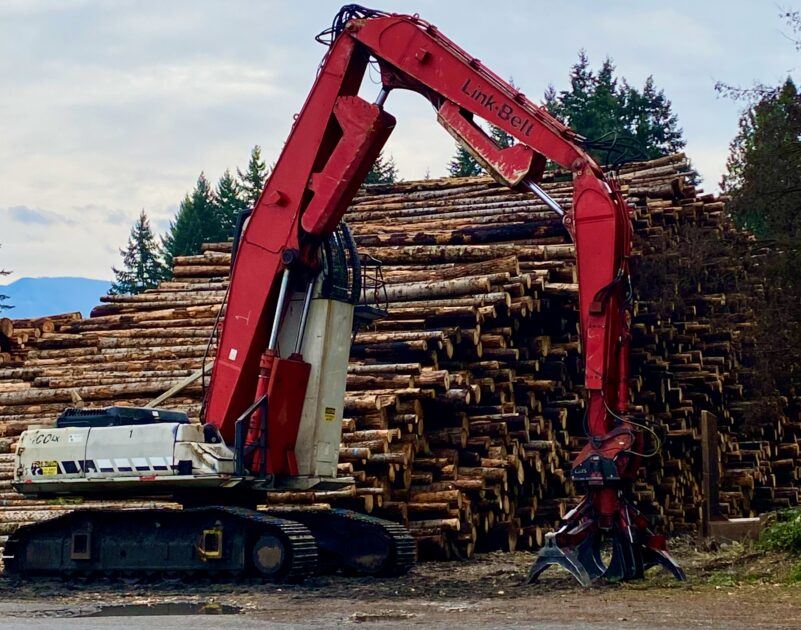


































































Log landing, Gifford Pinchot National Forest. Photo: Jeffrey St. Clair.
Two bills making their way through the Senate are continuing the administration’s attack on national forest land, with both taking different approaches to moral panics Trump is currently stirring up: blaming Democrats for lackluster wildfire management and immigration.
The first bill, the Fix Our Forests Act, was introduced by Sen. John Curtis (R-Utah). Upon first glance, the act has some worthy goals, specifically addressing wildfire threats in high-priority fire sheds and improving tools to reduce wildfire risks and improve forest health. It would create a “Fireshed Registry” that contains geospatial data on wildfire exposure, hazardous fuels management, and tracking project effectiveness, and establish a Wildland Fire Intelligence Center to provide fire managers with scientific and technical analysis, similar to the work being done by California’s Wildfire and Forest Resilience Task Force.
But as critics have pointed out, there are some troubling inclusions. The first centers on environmental reviews, specifically the National Environmental Policy Act of 1969 (NEPA). Sections 101(c), 103(e), and 105(e) all specify that various aspects of fireshed management — designation of fireshed management areas, establishment and maintenance of the Fireshed Registry, and fireshed assessments — are exempt from NEPA requirements. In a sign-on letter, environmental justice organizations warned that the removal of NEPA requirements would eliminate essential scientific and public input, potentially leading to inaccurate assessments and decisions.
Another concern is Section 106, which grants various authorities the power to undertake fireshed management projects across thousands of acres for virtually any reason. These projects have broad objectives, such as “removing vegetation or other activities to promote healthy forest stands” or “to reduce hazardous fuels,” which opens the land to logging activity under the guise of wildfire prevention. The sign-on letter described this inclusion as “log first, look later,” and Earthjustice released a statement calling the act “nothing more than a boon to the logging and wood pellet industry.”
Last week, the bill passed the Senate Committee on Agriculture, Nutrition, and Forestry and has been placed on the Senate’s Legislative Calendar.
The second bill, the Border Lands Conservation Act, was introduced by Sen. Mike Lee (R- Utah) at the beginning of October. The bill mandates that the Secretaries of the Interior, Agriculture, and Homeland Security survey all existing roads on federal land, including national parks and forests, and, if necessary, construct new, accessible roads to deter illegal border crossings. The bill also calls for the installation of “tactical infrastructure” on forest land – meaning “observation points, remote video surveillance systems, motion sensors, vehicle barriers, fences, roads, bridges, drainage, and detection devices.” Like the previous bill, the Border Lands Conservation Act is not concerned with the environmental impact these projects would have on the land.
More concerning, as some critics have pointed out, the bill defines land covered under the legislation as “located in a unit, or in a portion of a unit, or within one or more parcels of land that shares an exterior boundary with the southern border or northern border.” Hypothetically, a massive national park or forest such as Big Bend National Park in Texas, Glacier National Park in Montana, and the Tongass National Forest in Alaska would fall under the jurisdiction of this bill. And if that last one sounds familiar, Trump has been openly calling for logging in the Tongass National Forest. The Border Lands Conservation Act would give the administration cover under the guise of national security to do whatever it wants.
Thankfully, unlike the Fix Our Forests Act, there has been little movement on the Border Lands Conservation Act, which was referred to the Committee on Energy and Natural Resources at the beginning of October.
Both the Fix Our Forests Act and the Border Lands Conservation Act are fundamentally attempts to gut park and forest land. It’s all part of the administration’s larger plan to prioritize resource extraction over environmental protection — going back to Trump’s executive order in March asking agencies to increase timber production on federal land. Either of these bills could significantly compromise the long term well-being of these vital natural areas.
This first appeared on CEPR.
The post Two Senate Bills Target Forests Under the Cover of Wildfire Prevention and Border Security appeared first on CounterPunch.org.
This post was originally published on CounterPunch.org.